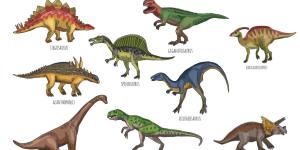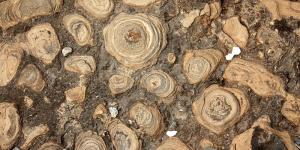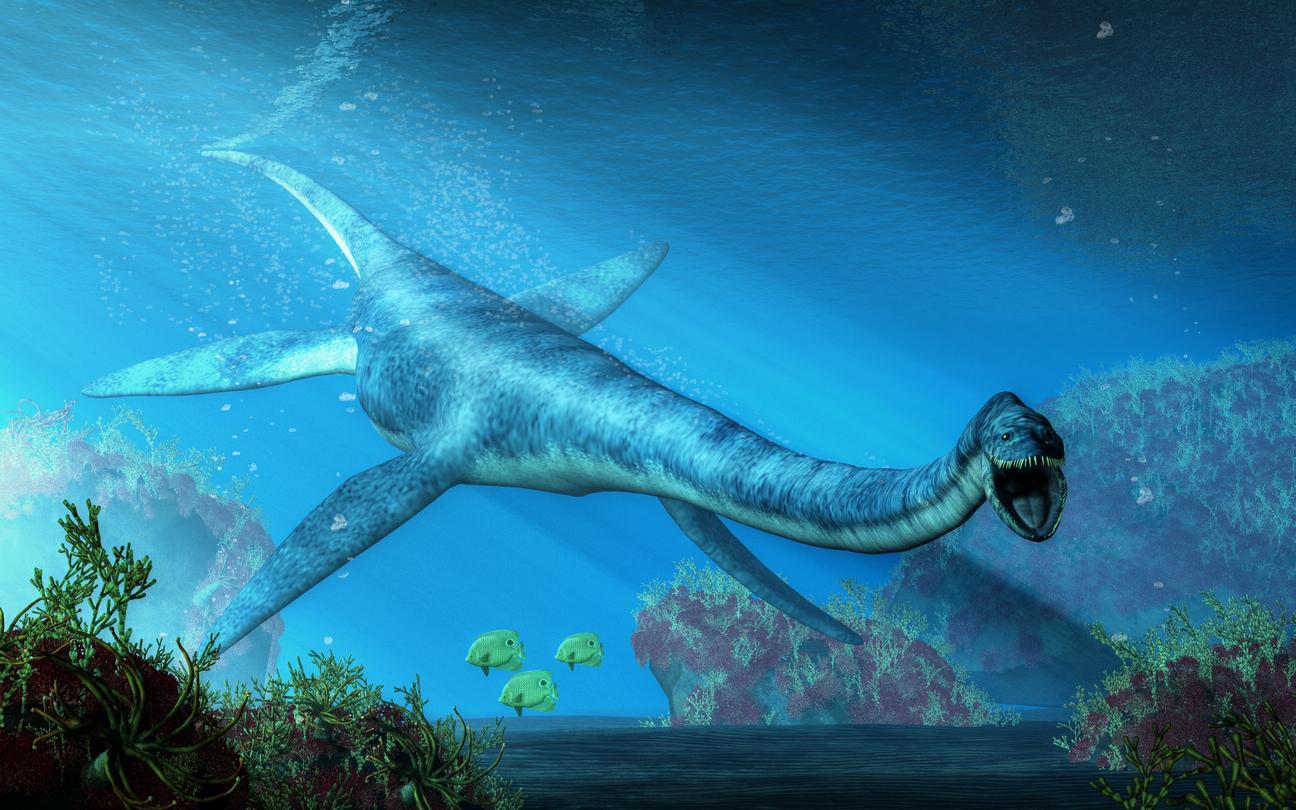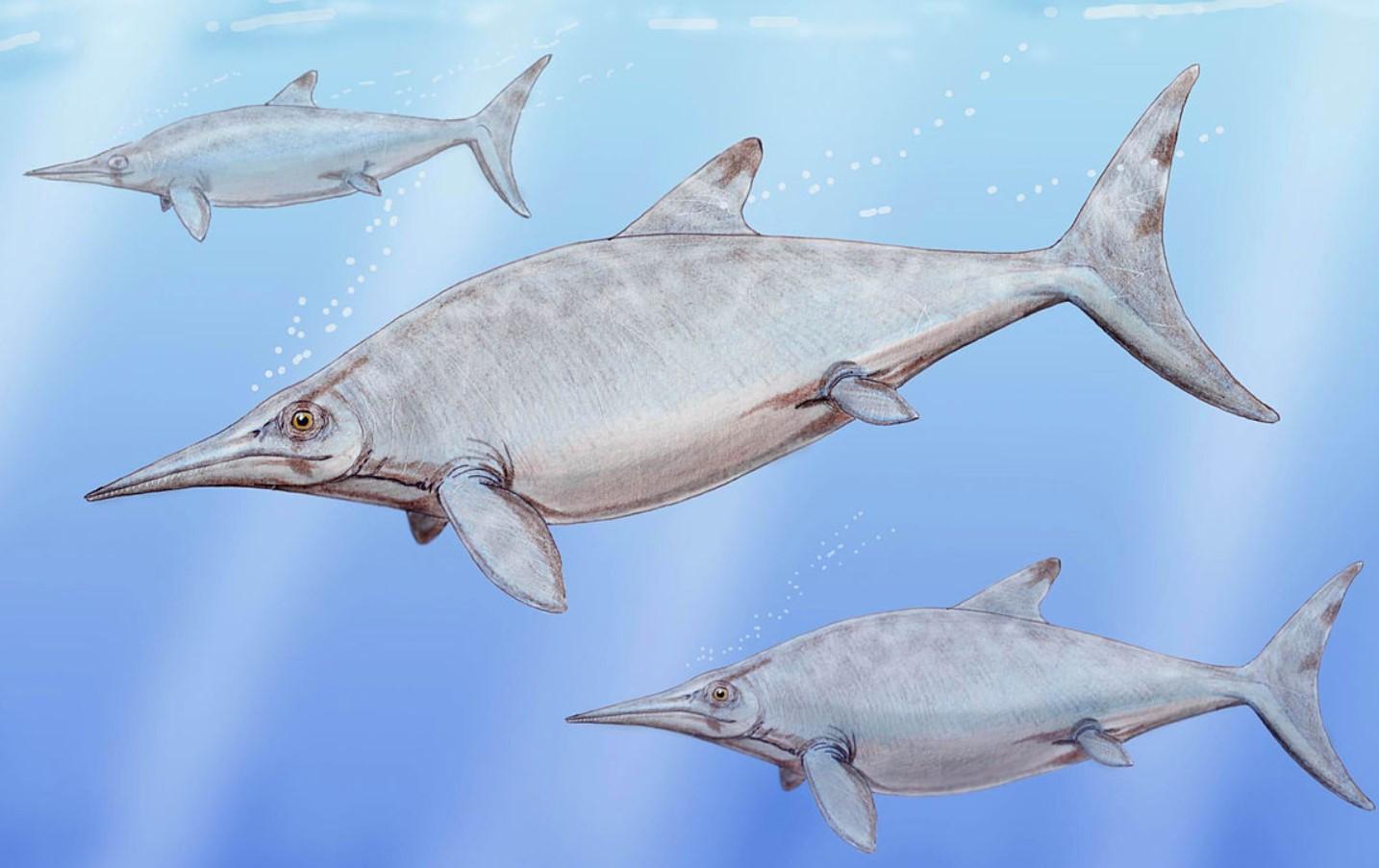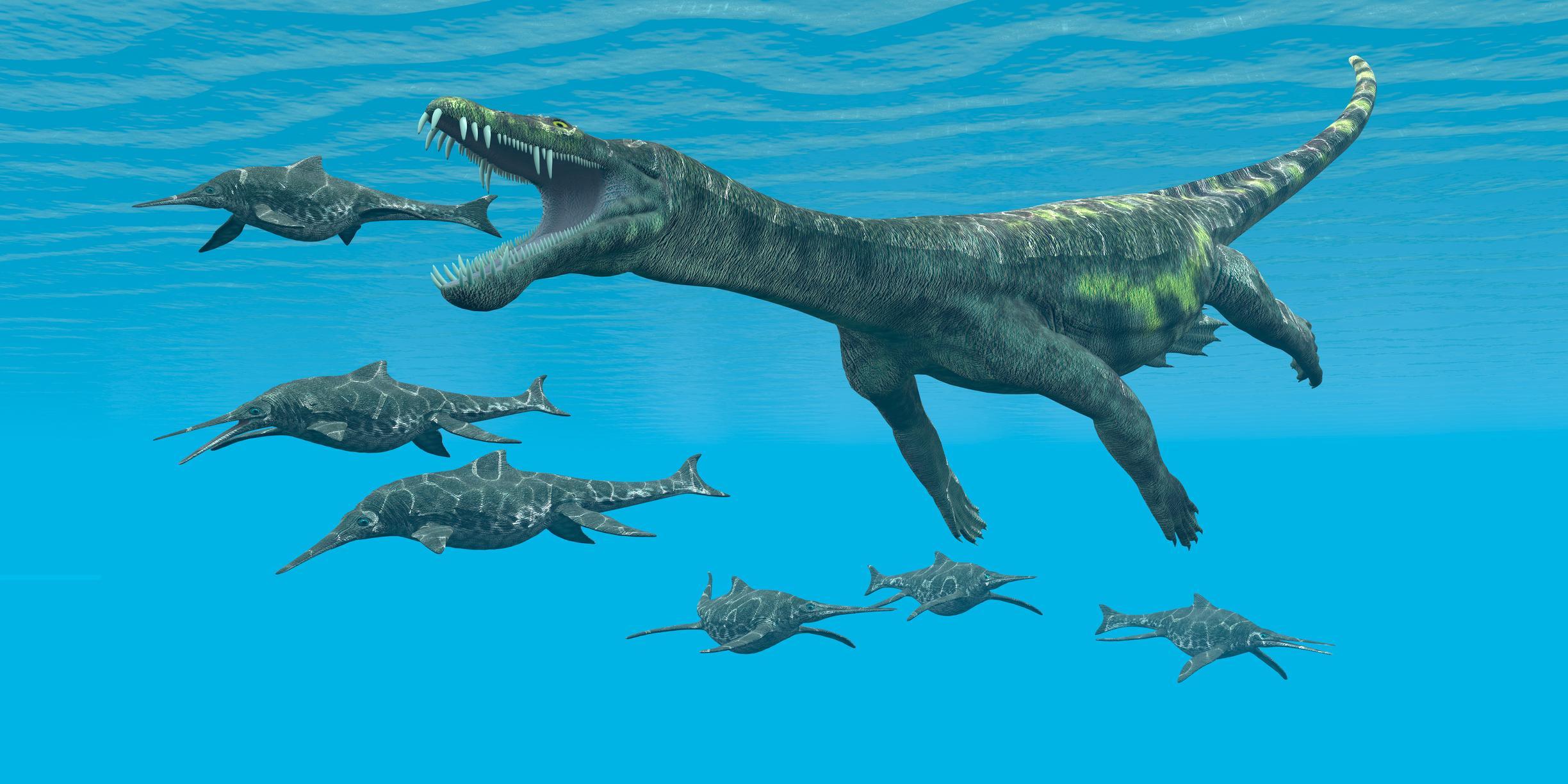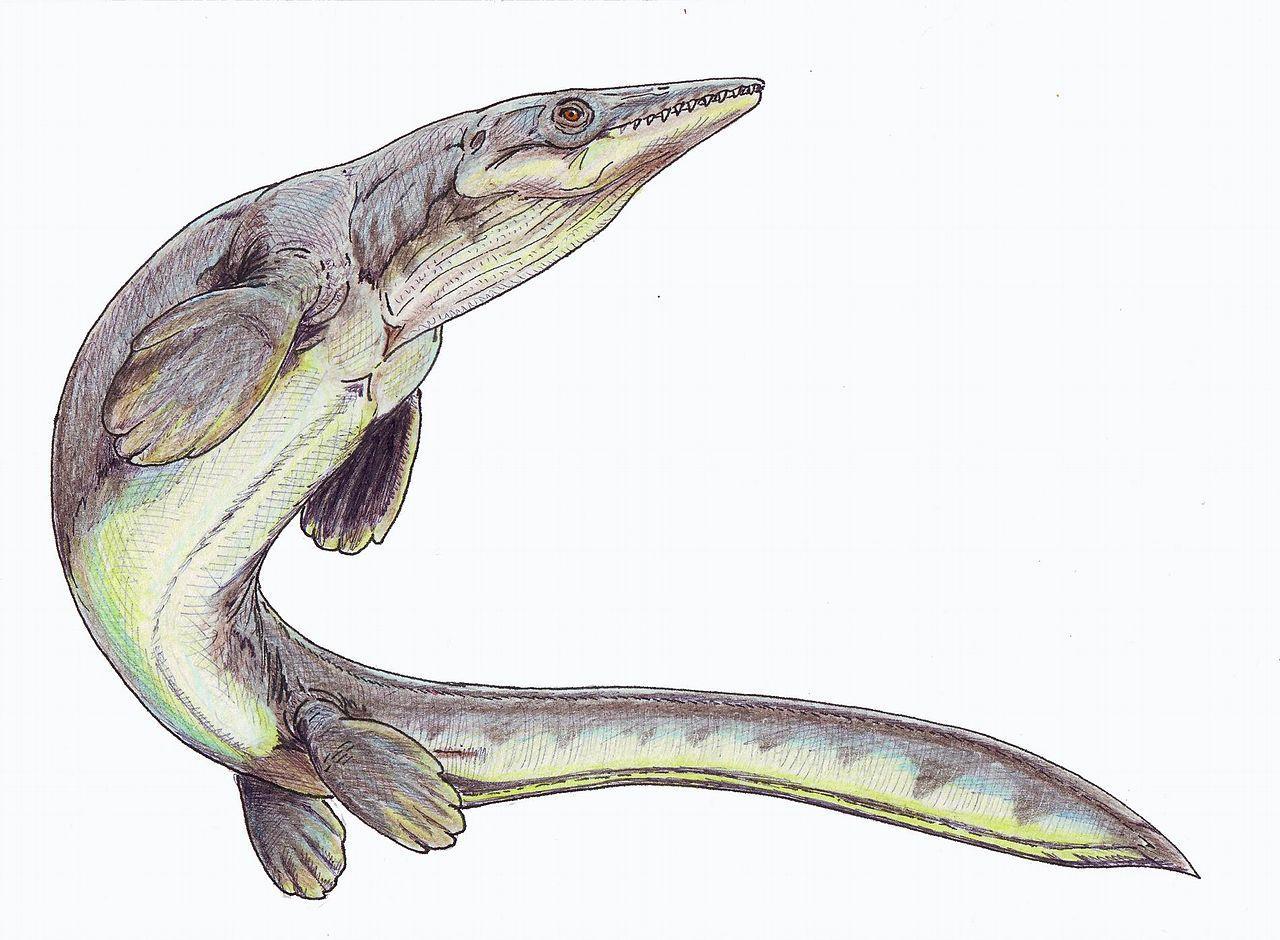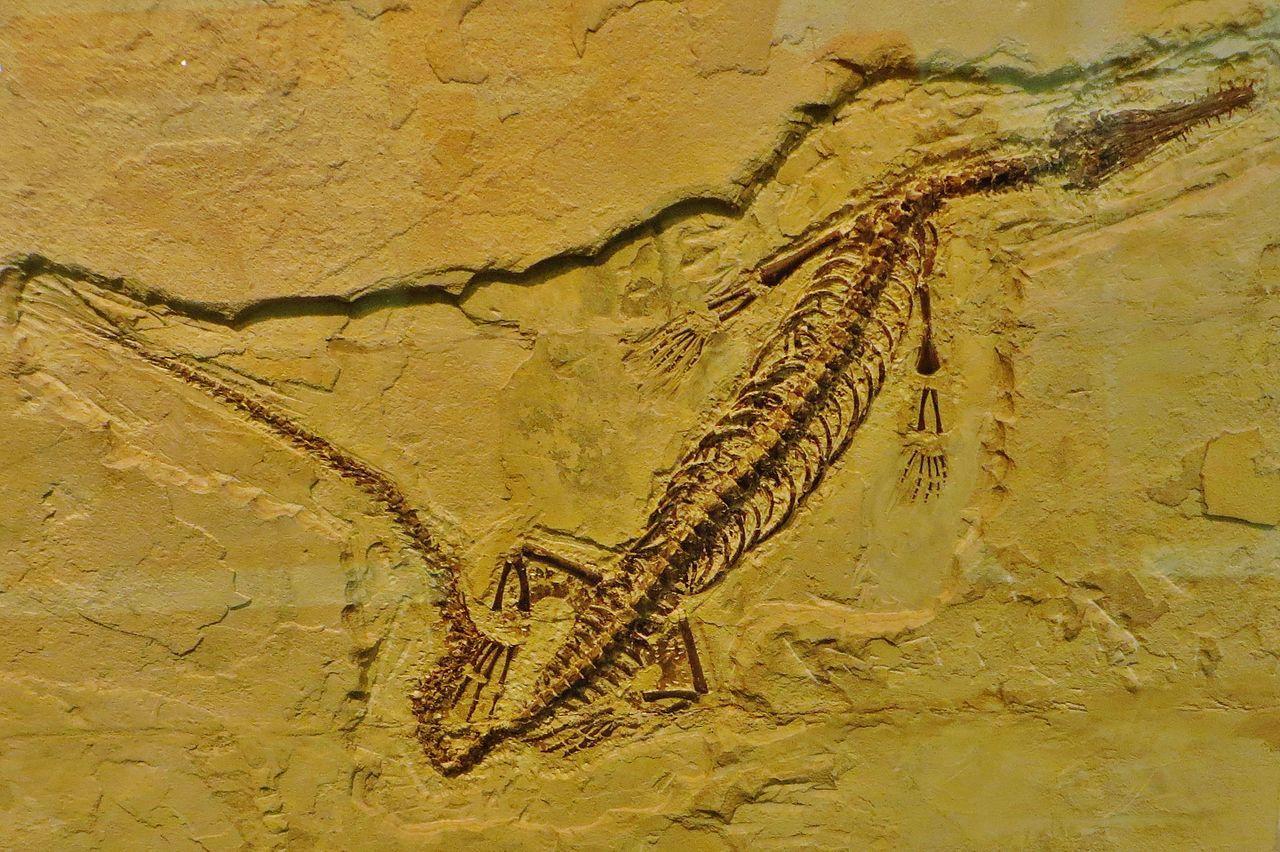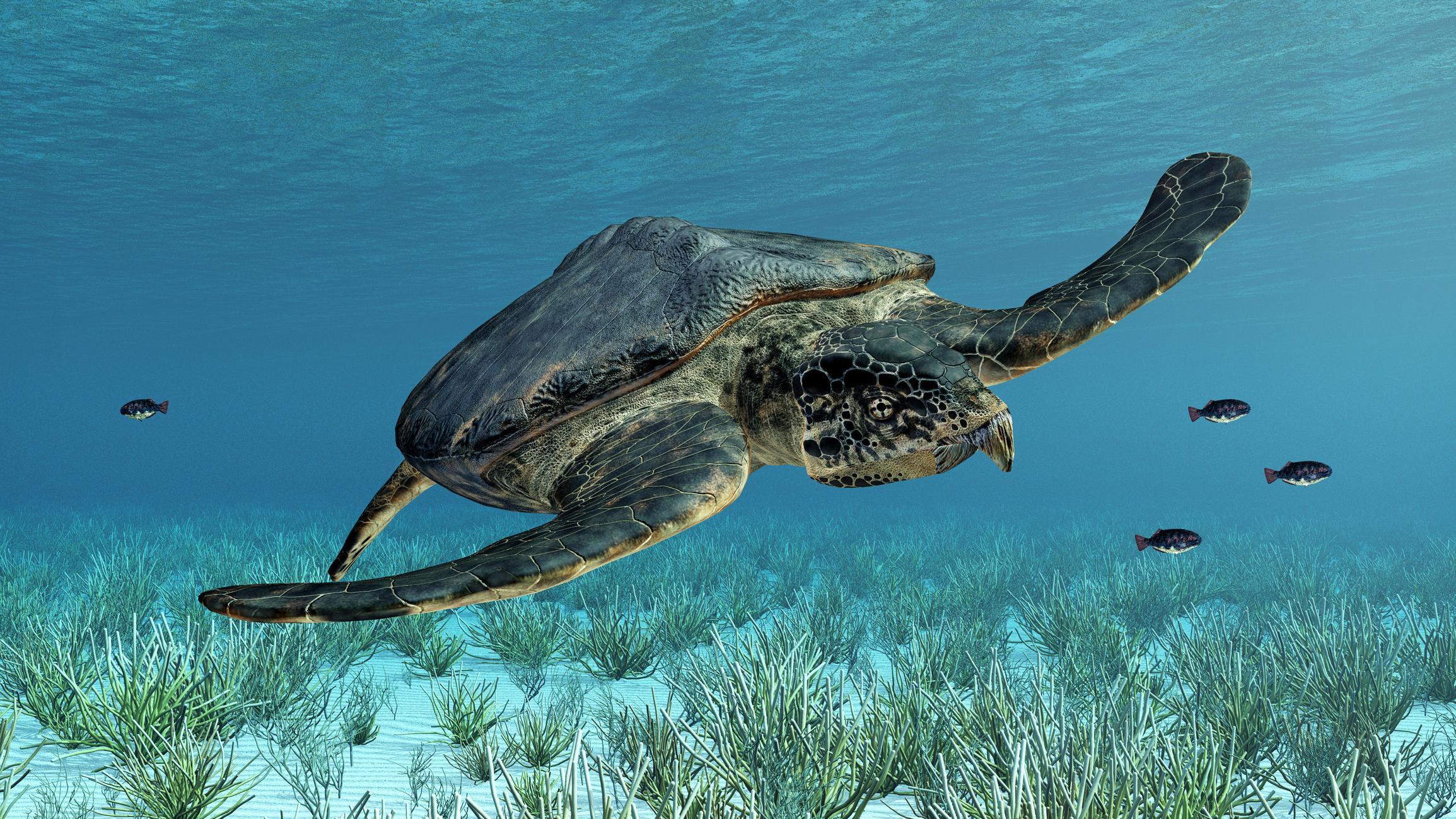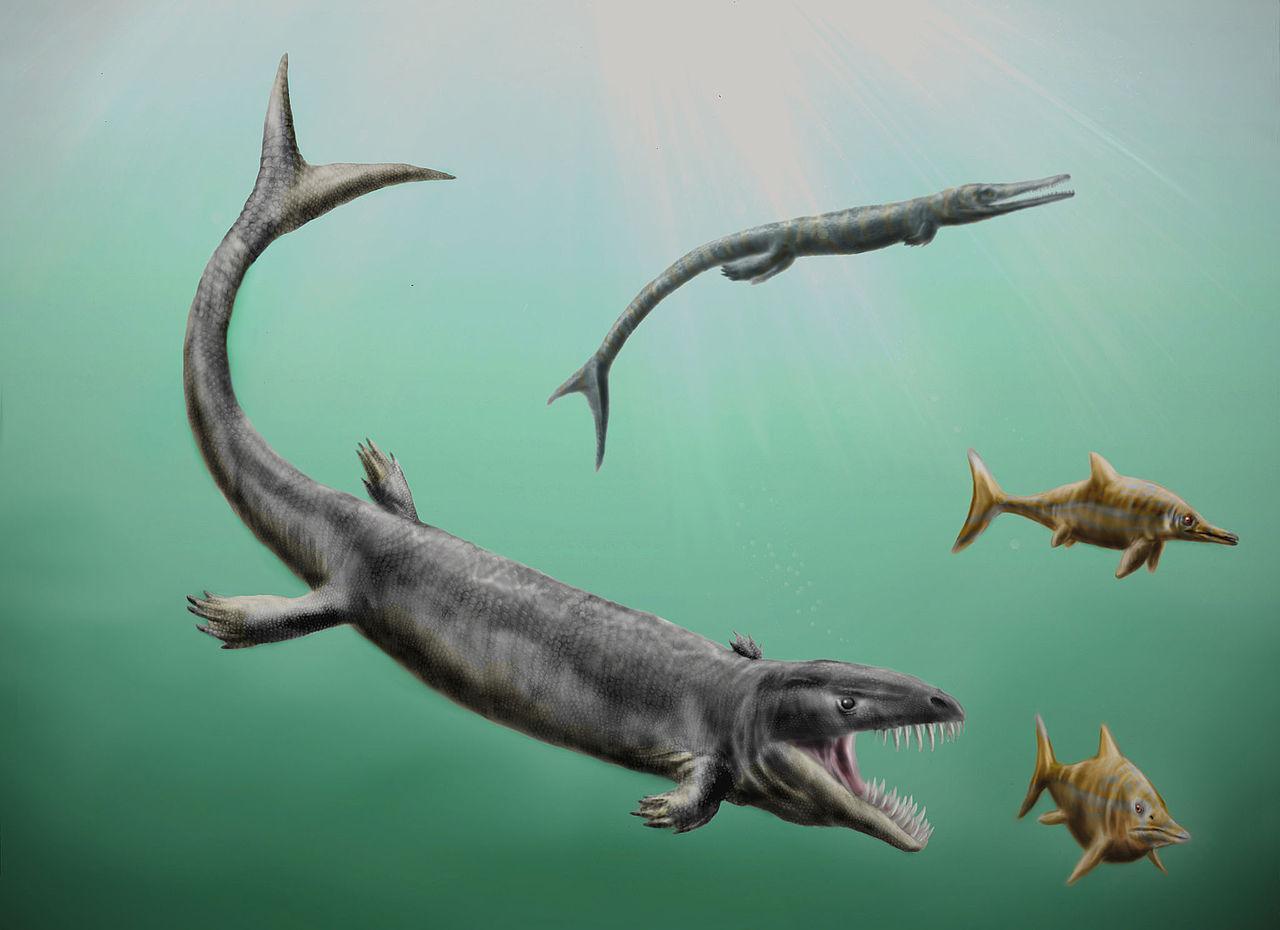Were There Ocean Dinosaurs?


Few of the most well-known dinosaurs are types of marine dinosaur. We might more often think of terrestrial dinosaurs such as those from the genera Tyrannosaurus or Velociraptor. There is a good reason for this, since there technically are no true marine dinosaurs. When we think of prehistoric animals, dinosaurs are the one which most of us will consider. However, there are other types of prehistoric reptiles which resemble dinosaurs in terms of morphology.
In this thedailyECO article, we ask where there ocean dinosaurs? We discover the truth about aquatic dinosaurs and discover the types of prehistoric marine reptiles that did exist.
- Did ocean dinosaurs exist?
- Differences between dinosaurs and marine reptiles
- Aquatic dinosaurs
- Stenopterygius spp.
- Plesiosaurus spp.
- Ophthalmosaurus spp.
- Elasmosaurus spp.
- Nothosaurus spp.
- Platecarpus spp.
- Mesosaurus spp.
- Placodus spp.
- Archelon spp.
- Dakosaurus spp.
- Other types of marine dinosaurs (marine reptiles)
Did ocean dinosaurs exist?
The Mesozoic Era is known as the era of the dinosaurs. It was during this geological time period they prospered to the point of being the most abundant group of vertebrates on Earth. However, they were not the only animals that managed to progress. Reptiles managed to adapt to other environments besides land, including the oceans. The dinosaurs did not have the ability to adapt to this environment. For this reason, we can say marine dinosaurs did not exist.
Marine reptiles are often confused with dinosaurs because some of them were contemporaries during the Mesozoic Era. While they also has certain similar characteristics in terms of morphology, they are considered separate groups. It is important to emphasize that the terms ‘marine dinosaur’ or ‘ocean dinosaur’ are incorrect. When someone refers to ocean dinosaurs, they are likely referring to certain marine reptiles present during the Mesozoic Era.
While there are no marine dinosaurs, this does not mean there were not some dinosaurs with aquatic habits. Although all dinosaurs are by nature terrestrial, we will later examine some dinosaur species with aquatic habits.
Differences between dinosaurs and marine reptiles
We have already explained that dinosaurs were exclusively terrestrial, even if some had aquatic habits. For this reason, we can distinguish them from prehistoric marine reptiles. The differences between these two prehistoric animals are the following:
- Legs: the main difference is that dinosaurs have their legs located under the body allowing them to walk firmly. Marine reptiles have them projected outwards, to the sides. In this case the legs were modified into fins. This position is afforded due to the pelvic structure of marine reptiles.
- Temperature regulation: another important difference is that dinosaurs were endothermic, while reptiles are believed to be ectotherms. This means they regulated they body temperature internally and externally, respectively.
- Classification: another important difference is the classification of marine reptiles and that of dinosaurs, in which it is clearly seen that they are taxonomically different. This is due to separate evolutionary paths, despite sharing common ancestors.
Classification of marine reptiles and dinosaurs
The classification of prehistoric marine reptiles includes various orders, suborders and families within the larger class of Reptilia to which all extant reptiles also belong:
- Order Mesosauria: the first-known aquatic reptiles.
- Order Ichthyosauria: similar in appearance to today's dolphins.
- Family Protostegidae: extinct sea turtles with a minimal shell. Some were giant in size.
- Family Cheloniidae: current hard-shelled sea turtles.
- Family Dermochelyidae: the only living representative of this family is the leatherback turtle.
- Family Mosasauridae: aquatic lizards, similar in morphology to current monitor lizards.
- Order Plesiosauria: with a long neck, wide body and very long fins.
- Suborder Thalattosuchia: similar to crocodiles.
- Order Nothosauroidea: similar to current lizards, but with very long necks.
- Order Placodontia: with plate-shaped teeth.
Aquatic dinosaurs
As we have stated ocean dinosaurs did not exist since they were known to be exclusively terrestrial animals. However, there were animals within the clade Dinosauria which are believed to have exhibited certain aquatic habits. This is similar to today's birds which are actually extant feathered dinosaurs. This is why we group dinosaurs into avian dinosaurs (birds) and non-avian dinosaurs (all other dinosaur species).
There are certain extant species of birds which live exclusively marine lives, even if they cannot breathe under water. These types of avian marine dinosaurs include the following:
- Family Spheniscidae: commonly known as penguins. They can only walk and swim, but not fly. They live on coastal land to mate and develop their eggs, but they spend much of their time in the ocean.
- Order Pelecaniformes: includes pelicans, frigatebirds and cormorants. They are waterbirds with webbed feet and the ability to fly and swim.
- Order Procellariiformes: includes albatrosses and similar birds, which have the ability to eliminate the sea salt they consume through their noses.
When we consider non-avian dinosaurs, it is difficult to know their habits since they have been extinct for such a long time. This means most of our information about their behavior derives from the fossil record. Much of what we do know is supported by research, but is derived from theories that are always under debate. With this in mind, we can say there are certain dinosaurs which were believed to have some aquatic habits. They include:
- Baryonyx: this dinosaur was discovered in the 1980s in England. Its long snout is thought to be due to the animal being piscivorous, meaning it fed on fish. They also have a very sharp front claw which would have been useful in catching fish. The implication is that they may have had a semi-aquatic lifestyle.
- Deinocheirus: the largest of the possibly aquatic dinosaurs, this enormous theropod had a beak which was similar to those of ducks. This suggests they foraged for aquatic plants, filtering out water as they ate. They also possibly had a large tongue to eat plants from the beds of freshwater bodies.
- Protoceratops: while there is no scientific consensus, it has been suggested that this dinosaur may possibly have been amphibious. While not all paleontologists would agree, the location of the fossils near ancient water bodies suggests they at least lived near aquatic ecosystems and would have been part of them to some degree.
- Spinosaurus: this large theropod has a tail which resembles a modern thresher shark. Along with their elongated jaws, this suggests they were piscivorous. They may have slapped their tail to stun fish for consumption. Another appendage was a large sail on their back (depicted in picture below) which resembles a sailfish and served a hydrodynamic purpose. This means they were better able to move through water.
- Suchomimus: another type of spinosaurid, they had a slender skull which is reminiscent of a crocodile. Their cone-shaped teeth would also have been useful for catching fish.
While there is much information yet to be discovered, much of the aquatic behavior of certain dinosaurs is still hypothetical. However, the deductions we use are based on a great deal of research. This means there is evidence to suggest that certain dinosaurs had aquatic behaviors, even if their extent is undetermined.
Now that we have looked at the equivalent of ocean dinosaurs, we can look at species of prehistoric marine reptiles.

Stenopterygius spp.
Ichthyosaurs like those of the Stenopterygius genus were very similar to today's dolphins, bearing a long snout, four pairs of fins, caudal fins and a dorsal fin. They were four meters long and was a species of viviparous animal, as are dolphins.
Learn more about viviparous marine animals with our article which explains what are chordates?

Plesiosaurus spp.
They had limbs modified into fins, a very long neck and a small head (see picture below). This neck helped them to swim skillfully in marine waters. They measured at least 2 meters and up to 5 meters. They could eat mollusks and fish, which they crushed with their strong jaw. In their stomach they had gastroliths, small stones that they swallowed to aid digestion and buoyancy. Their embryonic development was also viviparous, retaining the young until birth.

Ophthalmosaurus spp.
Also similar in appearance to a dolphin, it could measure up to 6 meters long and was peculiar for having eyes up to 10 centimeters in diameter. This suggests they were animals capable of diving to deep sea depths or that they were nocturnal hunters. They also had plates around their eyes to give them support and protection underwater. Its front fins were larger than the rear fins and were helped by a large tail to maintain swimming.

Elasmosaurus spp.
It was a species of plesiosaur with a very long neck made up of 70 cervical bones. This made it difficult to lift unless it supported itself on its front legs, something that was possible only in water. Their head was small in relation to their body and neck, as seen in the picture below. The supposed reason for such a long neck was to improve hydrodynamics, although it is also possibly for mating displays and/or avoiding predators. Elasmosaurus was 14 meters long and had very sharp teeth.

Nothosaurus spp.
They lived near the coast and would rest on land after swimming for long periods. The nothosaurus able to do this thanks to its webbed feet used for both swimming and walking. They were a species of oviparous animals and they laid eggs. It could measure up to 4 meters in length and fed on fish with the help of its sharp teeth which would close shut like a trap.

Platecarpus spp.
It lived during the Cretaceous period and could measure up to just over 4 meters. It had an elongated snout with conical teeth, but a short skull. They were viviparous reptiles, developing their embryos internally and resulting in live birth. They had to breathe out of the water, but they were excellent swimmers. As can be seen in the picture below, they had two pairs of fins for swimming and a long tail to be more streamlined underwater.
Learn about how dinosaurs reproduced in our related article.

Mesosaurus spp.
One of the first marine reptiles that existed, they were well adapted to saline waters. This species lived from the Permian to the Triassic periods. their body was long and thin, adapted to agile swimming and assisted by webbed feet. It had a small, elongated skull, large jaws and long teeth that were slanted outward. A photo of the fossil below shows how streamlined they were in the water.

Placodus spp.
It was a placodont, meaning they were an order of marine reptiles with flat teeth. They lived in shallow seas where the accumulation of clastic material predominated. Its body was wide and had a short neck, giving it an overall thick and compact appearance. They fed on shelled animals thanks to their strong, chisel-like front teeth. The back teeth were flattened to chew the shells. In addition, they had webbed feet that made swimming much easier for them.

Archelon spp.
It is an extinct genus of sea turtles belonging to the family Protostegidae. They measured up to 5 meters long and weighed more than 2,200 kilograms. They during the Upper Cretaceous. Their shell was reduced, like today's leatherback turtles, and its tail was tapered. In addition, it had a very large beak with which it could feed on squid, pelagic mollusks and other animals of various sizes. They could also use it to break shelled animals.
Learn more about the anatomy of turtles with our article on whether turtles have teeth.

Dakosaurus spp.
Although not related, it was similar to a crocodile in appearance. It belonged to the clade Thalattosuchia and was a large carnivore. It measured up to 5 meters. Unlike crocodiles, it had two fins on each side and an additional one on the tail. Their reproductive abilities and type are unknown.

Other types of marine dinosaurs (marine reptiles)
These are other types of prehistoric and now extinct giant marine reptiles:
- Toretocnemus spp.
- Paraplacodus spp.
- Macgowania spp.
- Shonisaurus spp.
- Henodus spp.
- Tylosaurus spp.
- Hudsonelpidia spp.
- Geosaurus spp.
- Lariosaurus spp.
- Himalayasaurus spp.
Although there are any ocean dinosaurs known to paleontology, there are many other different types of dinosaurs which had terrestrial or even some aerial dinosaur species. You can learn more about these types of animals with our article on how many kinds of dinosaurs were there?
If you want to read similar articles to Were There Ocean Dinosaurs?, we recommend you visit our Extinct animals category.
- Motani, R. (2000) The Evolution of Marine Reptiles. Evolution Education Outreach, 2, 224–235.
- Martin, J. of the Museum of Geology. (n.d.) Marine reptiles of South Dakota. Retrieved from: https://www.northern.edu/natsource/earth/Marine1.htm
- Gómez-Pompa, A., Barrera, A., Gutiérrez-Vázquez, J., & Halffter, G. (1980). Biology: Unity, Diversity and Continuity of Living Beings. Mexico City: National Council for the Teaching of Biology.
- Beatty, R., Beer, A., & Deeming, C. (2010). The book of nature. Great Britain: Dorling Kindersley.
- Gimsa, J., Sleigh, R., & Gimsa, U. (2016). The riddle of Spinosaurus aegyptiacus' dorsal sail. Geological Magazine, 153(3), 544-547.


